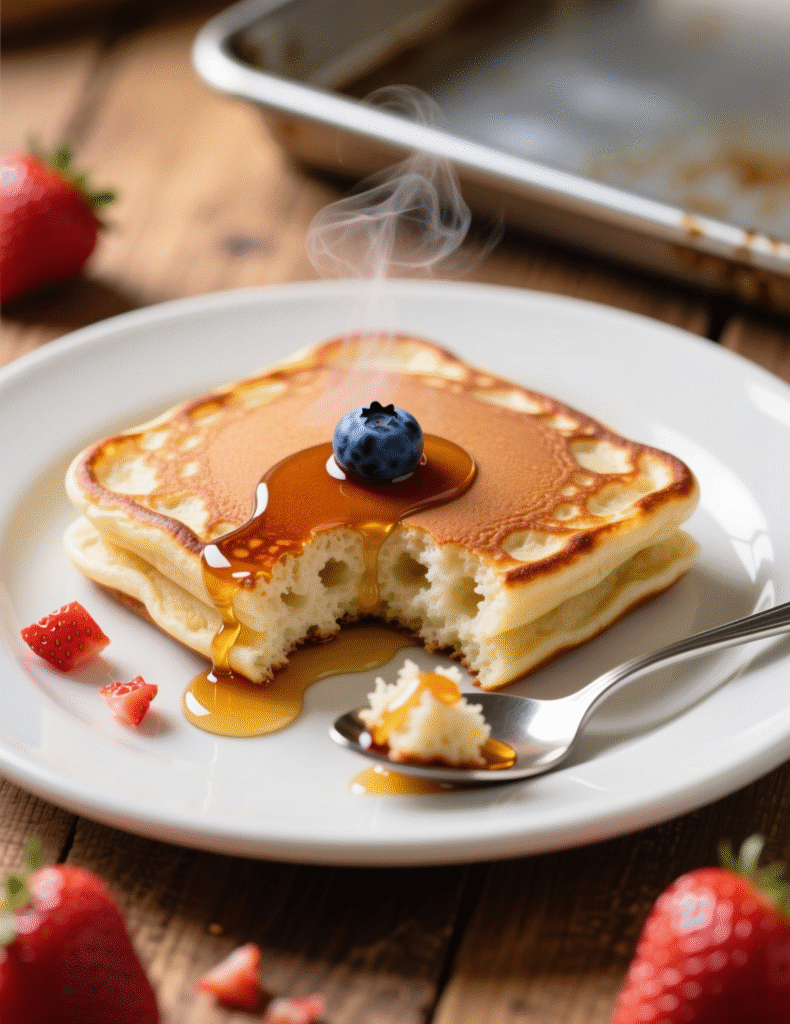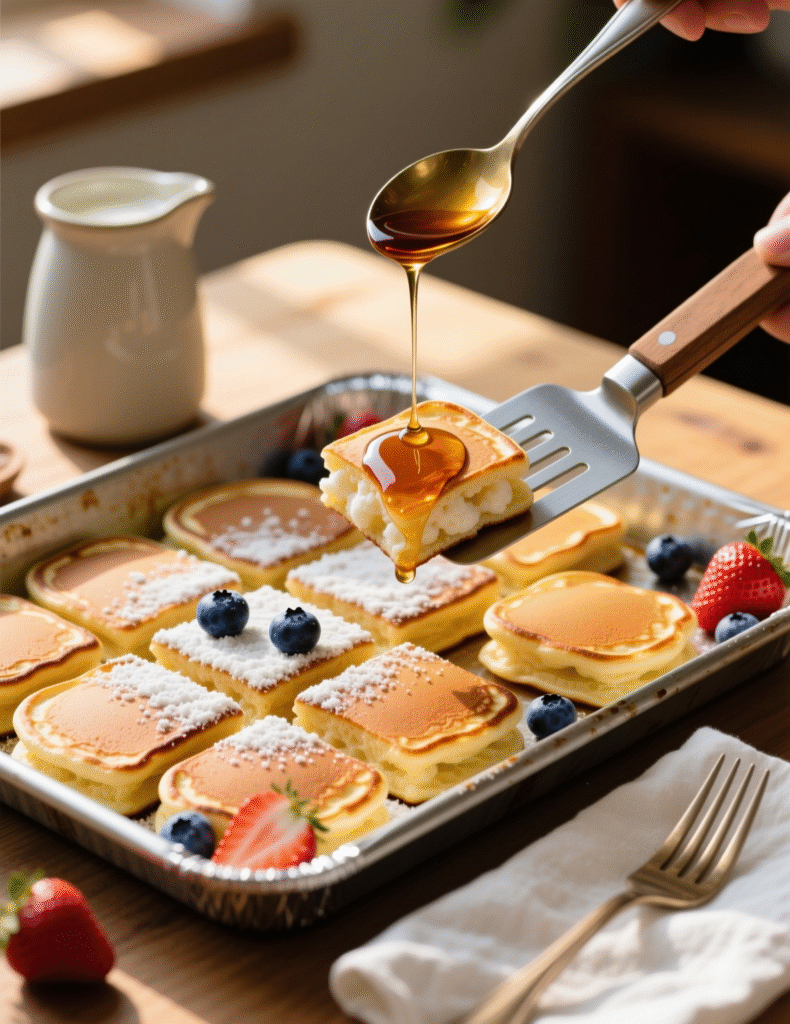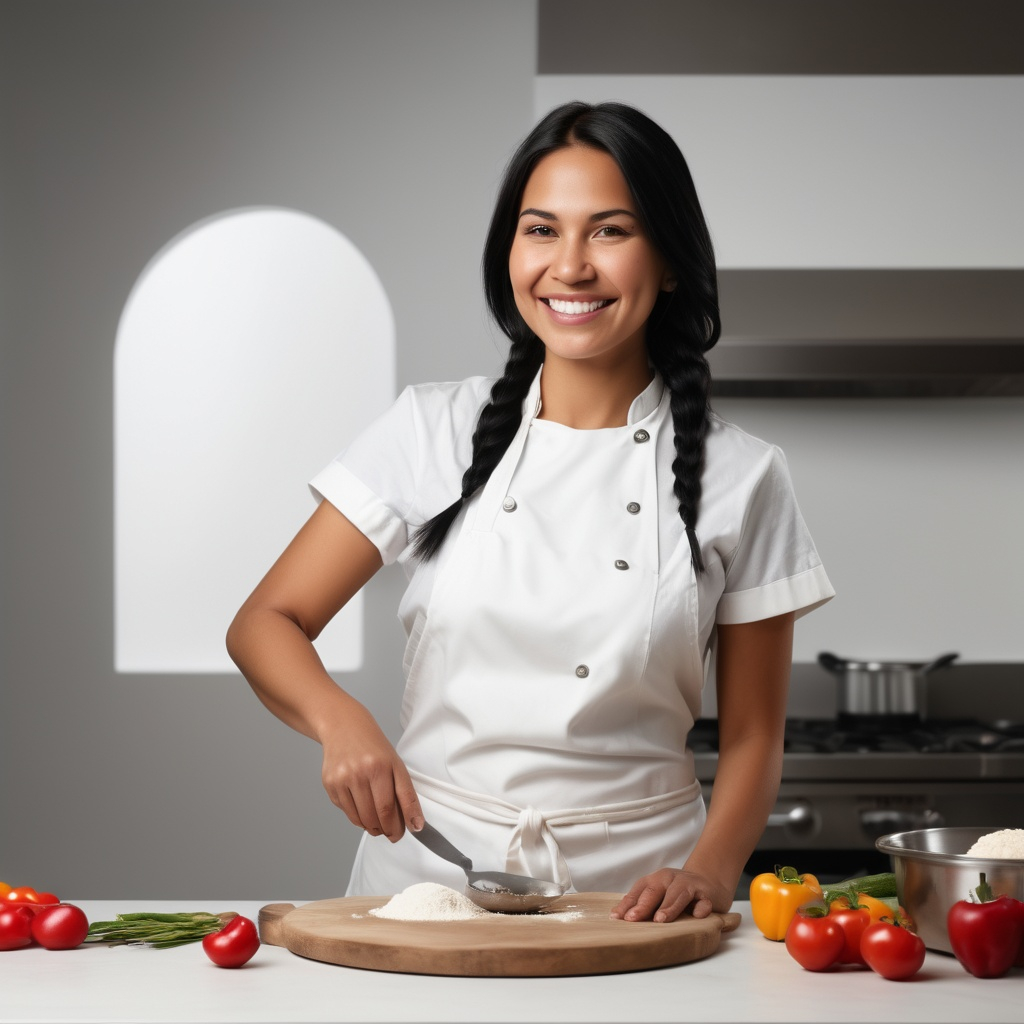Breakfast cooks never stop searching for speed without compromise. Pancakes, fluffy and golden, usually mean standing by the stove flipping batch after batch. That’s fine for two, maybe four. But for a crowd? Forget it. Enter sheet pan pancakes. Same comfort. Same texture if done right. But baked in one go, sliced clean, and served hot.
This method has become a favorite not just for home kitchens, but also in professional foodservice. Cafés, hotels, even catering companies lean into sheet pan pancakes because consistency sells. If you’ve got eight mouths waiting, this recipe will keep you sane while delivering perfect results. Let’s dig into the recipe, the method, and the deeper culinary science behind why it works so well.
Why Sheet Pan Pancakes Are Changing the Breakfast Game
Traditional pancakes take time. Even with two pans on the fire, you’re bottlenecked. By the time the last pancake is done, the first is stone cold. Sheet pan pancakes fix that pain. You pour one batter, spread it evenly, bake it once. Everyone eats together.
What surprises chefs the most is the textural payoff. A good recipe produces a sliceable square with the fluffiness of a griddle cake and the uniform crumb of a sponge. No uneven browning, no soggy middle. It’s also scalable. Double the recipe, grab another pan, and you’re feeding sixteen in the same time.
The Recipe: Sheet Pan Pancakes for 8 Servings
Here’s the tested formula. It’s been run in commercial kitchens and home ovens alike.
Ingredients
- 2 cups (240g) all-purpose flour
- 2 tbsp sugar
- 2 tsp baking powder
- 1/2 tsp baking soda
- 1/2 tsp fine salt
- 1 1/2 cups (360ml) buttermilk (room temperature)
- 2 large eggs
- 4 tbsp unsalted butter, melted and cooled slightly
- 1 tsp vanilla extract
Optional toppings: blueberries, sliced strawberries, chocolate chips, chopped nuts.

Method
- Preheat oven to 425°F (220°C). Grease or line a 9×13-inch sheet pan with parchment.
- In a large bowl, whisk flour, sugar, baking powder, baking soda, and salt.
- In another bowl, beat buttermilk, eggs, melted butter, and vanilla.
- Pour wet into dry. Stir gently until just combined. Don’t overmix; lumps are fine.
- Spread batter into the prepared pan. Smooth with a spatula.
- Sprinkle toppings if using.
- Bake 15–18 minutes, until golden and a toothpick comes out clean.
- Cool for 5 minutes before slicing into 8 even squares. Serve warm with syrup or butter.
This yields 8 generous servings. Each square sits tall and holds toppings without crumbling.
The Science Behind the Fluff
Let’s get geeky for a second. Pancake fluffiness is a marriage between gas expansion and gluten control. Baking powder and soda release carbon dioxide when hydrated and heated. This gas lifts the batter, creating that soft sponge-like crumb. But too much mixing and gluten chains form. That makes for chewy, bread-like pancakes.
Buttermilk does double duty. It reacts with baking soda, boosting lift. It also adds tang, balancing the sweetness. In sheet pan baking, the challenge is preventing a dense center. High initial oven temperature (425°F) sets the structure fast, locking the lift in place before it collapses.
Professional pastry chefs know this trick: preheat the pan slightly before adding batter. This kickstarts the bottom crust, preventing soggy layers.
Professional Tips to Elevate the Recipe
Every chef has their tweaks. Some swap 20% of the flour for whole wheat to add nuttiness. Others fold in ricotta for extra moisture and tenderness. For catering, brushing the top with melted butter right out of the oven gives a glossy finish that photographs beautifully.
If you want precision, use a digital scale. Consistency in weight guarantees repeatable results, especially in commercial kitchens. Two cups of flour measured loosely can swing by as much as 30 grams, and that shifts texture noticeably.
One more note: toppings sink. To prevent blueberries or chocolate chips from sinking straight to the bottom, toss them lightly in a teaspoon of flour before sprinkling. It’s a classic bakery trick.
Sheet Pan Pancakes in Foodservice
Restaurants increasingly use sheet pan pancakes in brunch buffets. Why? Because labor costs are brutal. One pan yields eight slices in under 20 minutes with minimal active work. Compare that to flipping pancakes for 15 minutes straight. Staff can focus on plating, customer service, or other dishes.
Hotels often par-bake them to 90% doneness, then finish to order for peak freshness. Caterers freeze baked slabs, thaw them overnight, then reheat in a low oven before slicing. Texture holds surprisingly well.
Industry data backs this up. According to the National Restaurant Association, labor-saving recipes like sheet pan meals have grown 23% in adoption over the last five years in casual dining and catering sectors.
Addressing Common Questions
Do sheet pan pancakes taste the same as stovetop ones?
Not identical, but close. They’re slightly more cake-like. But with proper recipe balance, they mimic griddle pancakes well enough that most eaters won’t complain.
Can you make them dairy-free?
Yes. Swap buttermilk with oat milk soured with a teaspoon of vinegar. Use coconut oil instead of butter. You lose some richness, but texture holds up.
How do leftovers keep?
They refrigerate for up to 3 days or freeze for a month. Wrap tightly. Reheat in a toaster oven for best results. Microwave softens but loses edge crispness.
What about gluten-free?
Use a 1:1 gluten-free flour blend with xanthan gum included. Expect slightly denser results, but still delicious.

Creative Variations Worth Trying
Sheet pan pancakes are a blank canvas. Fold in mashed bananas for a banana-bread vibe. Swirl in cinnamon sugar before baking for a coffee-cake effect. Layer thin slices of apple and sprinkle with brown sugar for an upside-down style pancake.
In professional pastry, some chefs use half pancake batter, half brownie batter, marbled together for brunch dessert boards. Another emerging trend is savory sheet pan pancakes. Think cheddar, scallions, diced ham. Served with sour cream instead of syrup. Perfect for breakfast-for-dinner menus.
Nutrition and Portioning Insights
A single square from this recipe comes in around 220–250 calories before syrup. For catering, that’s ideal. Balanced between carbs, modest fat, and protein. Portioning is also foolproof—eight equal squares. No one fights for the biggest pancake.
For school meal programs, nutritionists often reduce sugar to 1 tbsp and add mashed sweet potato or pumpkin puree for natural sweetness plus vitamin A. Sheet pan pancakes allow that kind of customization at scale without wrecking the workflow.
Trends and Cultural Notes
In Japan, souffle pancakes went viral for their height and wobble. In the US, sheet pan pancakes are making a quieter but steadier climb in popularity. TikTok boosted them, but it’s the practicality that keeps them around. Parents love the no-mess factor. Professionals love the scalability.
Google Trends data shows searches for “sheet pan pancakes” jumped by 300% between 2019 and 2023. This is not a fad; it’s a shift in how people think about breakfast service.
Troubleshooting: What Can Go Wrong
Dense texture? Usually overmixing or expired baking powder. Always check your leaveners’ freshness with a quick vinegar test.
Raw center? Oven too cold or pan overcrowded. Stick with 9×13 for this recipe.
Overbrowning? Tent with foil at the 12-minute mark. Professional convection ovens can run hot, so watch closely.
Even experts mess it up now and then. Don’t sweat it. Adjust variables like you would with bread or cakes. Pancakes, after all, are just quick breads at heart.
Conclusion: The Smart Way to Feed Eight with Ease
Sheet pan pancakes hit the sweet spot between efficiency and indulgence. For eight servings, this recipe delivers fluff, flavor, and flexibility. Whether you’re cooking for family, running a brunch service, or feeding a school cafeteria, the method saves time and stress.
At the end of the day, food is memory. A table where everyone gets their slice at the same time is more than convenience—it’s hospitality. So grease that pan, whisk that batter, and bake yourself a batch of freedom from the griddle. You’ll never look back.
FAQs
What makes sheet pan pancakes different from regular pancakes?
They’re baked all at once in a pan, saving time and ensuring even cooking for multiple servings.
How many people does this recipe serve?
It yields 8 equal servings from a standard 9×13-inch sheet pan.
Can I make sheet pan pancakes ahead of time?
Yes, bake and store them in the fridge for up to 3 days or freeze for a month.
Do sheet pan pancakes taste like griddle pancakes?
They’re slightly more cake-like but still fluffy and comforting.
Can I add toppings to the batter?
Absolutely, just sprinkle fruits, nuts, or chocolate chips before baking.
How do I keep toppings from sinking?
Toss them lightly in flour before adding to the batter.
What’s the best way to reheat leftovers?
A toaster oven works best for reheating while keeping the edges crisp.
Can I make these gluten-free?
Yes, use a 1:1 gluten-free flour blend with xanthan gum for structure.
How do I make dairy-free sheet pan pancakes?
Swap buttermilk with soured oat milk and use coconut oil instead of butter.
What’s the ideal oven temperature?
425°F (220°C) ensures the batter sets quickly and bakes evenly.

Marie Smith is a passionate recipe blogger, sharing easy, delicious, and creative culinary ideas that inspire home cooks to elevate everyday meals with flavor and simplicity.
